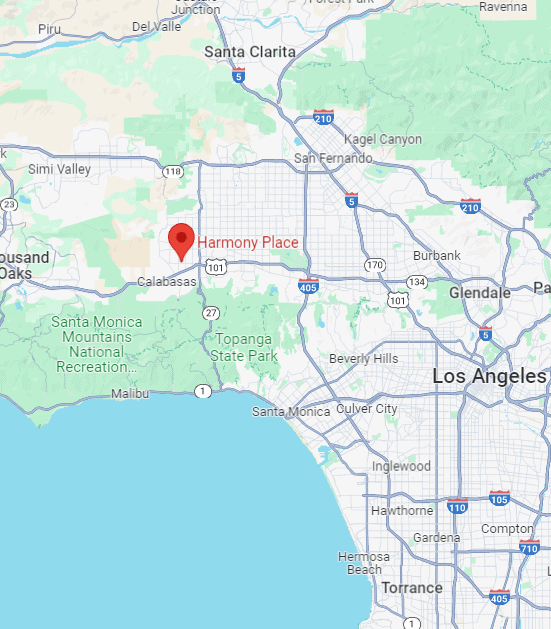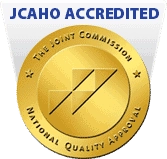Sedative Withdrawal Treatment in Los Angeles, CA
Harmony Place in Los Angeles, CA, provides trusted sedative withdrawal treatment for individuals seeking safe, professional help during detox and early recovery. As a leading Los Angeles rehab center, we specialize in withdrawal treatment for sedatives, offering compassionate care designed to ease symptoms and promote lasting recovery in a comfortable, medically supervised setting.
Sedative withdrawal can be overwhelming, but you don’t have to face it alone. Our experienced clinical team delivers personalized treatment for sedative withdrawals using evidence-based detox methods and holistic therapies that support both body and mind. If you or a loved one needs help for sedative withdrawal, Harmony Place is here to guide you toward a stable, healthy future—starting today.
What Are Sedatives Prescribed to Treat?
Sedatives are commonly prescribed to address various psychological and medical issues, such as insomnia, anxiety disorders, muscle spasms, preoperative sedation, withdrawal from drugs and alcohol, psychiatric conditions, and seizures. Their primary function is to soothe the nervous system and promote relaxation.
Due to the significant risk of dependence and addiction associated with sedative medications, it is crucial to use them under appropriate medical supervision. The causes of addiction include prolonged use, psychological dependence, tolerance build-up, underlying mental health issues, and recreational use, as well as genetic, biological, social, and environmental factors. If you are confronting sedative addiction, seeking prompt assistance at sedative rehabilitation centers is essential.
What Is Sedative Dependency?
Sedative addiction and dependency begin with abuse and are characterized by excessive usage along with both physical and psychological reliance. Signs of sedative addiction may include poor coordination, memory issues, heightened tolerance, cravings, mood fluctuations, slurred speech, fatigue, doctor shopping, risk-taking behaviors, respiratory depression, dizziness, confusion, and sedative withdrawal symptoms when the drug is not taken.
Long-term effects of sedative use can result in severe withdrawal symptoms from sedatives, such as seizures and potentially life-threatening complications. Sedative use disorder may also cause feelings of shame, irritability, mood swings, guilt, hopelessness, paranoia, fear, depression, and emotional numbing.
Sedative addiction rehab programs like the ones at Harmony Place typically initiate treatment with detox for stimulant sedative addiction and incorporate various intervention strategies, including sedative addiction therapy, sedative addiction recovery support groups, sedative abuse counseling, and relapse prevention techniques. After the detoxification process, if you need additional care but find our residential inpatient detox center unsuitable, our outpatient sedative treatment services may provide the perfect alternative.
What Is Sedative Withdrawal Syndrome?
Sedative withdrawal syndrome refers to the psychological and physical symptoms that occur when you become dependent on sedatives and abruptly stop using them. During this period, the body strives to regain balance, leading to symptoms of sedative withdrawal. These symptoms may include anxiety, a runny nose, sweating, insomnia, yawning, muscle aches, watery eyes, and restlessness.
As withdrawal progresses, more severe symptoms can arise, such as chills, stomach cramps, diarrhea, nausea, dilated pupils, rapid heartbeat, elevated blood pressure, and vomiting. Managing these sedative withdrawal symptoms can be challenging, which is why sedative rehab facilities employ safe sedative detox methods, including sedative withdrawal syndrome medications for withdrawal relief. Medication-assisted treatment (MAT) for sedative abuse recovery helps with managing withdrawal side effects and aids in coping with sedative cravings.
In addition to addressing sedative withdrawal syndrome symptoms, our detox and recovery programs are also designed to support you with polysubstance use, including alcohol and sedative addiction, by offering specific alcohol and sedative withdrawal support. If you feel that you do not need the intensive care provided by a residential inpatient detox center, our outpatient sedative treatment options, such as partial hospitalization programs (PHPs) for sedative addiction, may be a better fit for your needs. For more information about our sedative dependency treatment, we encourage you to contact us at Harmony Place Addiction Recovery.
What Are the Causes and Triggers of Sedative Withdrawal Syndrome?
The main factors that lead to sedative withdrawal syndrome include tolerance, abrupt discontinuation, physical dependence, high dosage, switching medications, stress, anxiety, medical conditions, substance use disorders (SUDs), long-term use, and polydrug use. If you are experiencing symptoms of sedative withdrawal syndrome, it is crucial to seek medical help.
Sedative addiction rehab programs can offer the support needed to alleviate your sedative withdrawal symptoms. Sedative rehabilitation centers like Harmony Place Addiction Recovery utilize safe sedative detox methods, including medication-assisted treatment (MAT) for sedatives. We also provide dual diagnosis treatment if you’re struggling with co-occurring mental health disorders simultaneously. If you observe signs of sedative withdrawal, please contact our admissions counselors today to learn more about our sedative dependency treatment.
Signs and Symptoms of Sedative Addiction Withdrawal
The signs and symptoms of sedative addiction withdrawal can appear across physical, psychological, and cognitive dimensions, with some experiencing particularly intense effects. If you or someone you care about is struggling with sedative withdrawal symptoms, please contact us at Harmony Place for assistance.
Sedative Addiction Withdrawal Physical Symptoms
Sedative addiction withdrawal can lead to a range of physical symptoms as your body adapts to the changes. The severity of these sedative withdrawal symptoms can differ based on factors such as the amount you’ve been using, the length of time you’ve been using it, and your general health. Here are some physical symptoms you might encounter:
- Fatigue: Persistent tiredness or a significant lack of energy.
- Muscle Pain and Cramps: Generalized body aches, tension, and cramping.
- Sweating: Increased perspiration, particularly during acute withdrawal phases.
- Headaches: Often related to tension or fluctuations in blood pressure.
- Nausea and Vomiting: Issues related to the digestive system.
- Diarrhea or Stomach Cramps: Discomfort within the gastrointestinal tract.
- Tremors or Shakiness: Unsteady hands or body movements.
- Heart Palpitations: Rapid or irregular heartbeats.
- Appetite Changes: A decrease or, occasionally, an increase in appetite.
- Insomnia: Difficulties with falling asleep or staying asleep.
- Dilated Pupils: Enlarged pupils.
- Runny Nose and Watery Eyes: Symptoms resembling those of a common cold.
Sedative Addiction Withdrawal Psychological Symptoms
Sedative addiction withdrawal can lead to a variety of psychological symptoms as your brain and body adapt to the lack of substances in your system. The intensity of these sedative withdrawal symptoms can differ depending on the level of your usage. Below are some of the most frequent psychological symptoms you may experience:
- Anxiety: Feeling restless, worried, or panicked.
- Depression: Experiencing sadness, hopelessness, or a loss of motivation.
- Mood Swings: Sudden changes in mood, irritability, or emotional instability.
- Agitation and Irritability: Getting upset or angry easily.
- Drug Cravings: Intense urges or cravings for substances, familiar with many drugs.
- Paranoia: A sense of worry or suspicion.
Sedative Addiction Withdrawal Cognitive Symptoms
Sedative addiction withdrawal can result in various cognitive symptoms as your brain adjusts to the absence of sedatives. The severity of these sedative withdrawal symptoms will differ depending on factors like the duration of use, dosage, and the specific substance in question. Here are some cognitive symptoms you may encounter:
- Confusion and Clouded Thinking: Facing difficulties in concentrating or making decisions.
- Memory Problems: Having trouble recalling recent events or sustaining focus.
- Hallucinations: Experiencing illusions that may be visual, auditory, or tactile.
- Poor Coordination: This involves encountering challenges with motor skills and physical movements.
Sedative Addiction Withdrawal Severe Symptoms (Life-Threatening in Some Cases)
When undergoing sedative withdrawal, you may encounter a variety of dangerous symptoms, some of which can be fatal. The likelihood of experiencing these symptoms increases if you have a co-occurring disorder or a pre-existing condition. Below is a list of some of the more intense symptoms you might face:
- Seizures: Episodes linked to epilepsy.
- Delirium: Marked by intense confusion, restlessness, and potential hallucinations.
- Severe Dehydration: This is caused by persistent vomiting, sweating, or diarrhea.
- Hypertension: Significantly high blood pressure.
- Fever: Increased body temperature.
Info and Statistics on Sedative Withdrawal Treatment in LA County
Sedative detox and recovery programs in Los Angeles County have seen a significant rise in recent years due to the growing demand for sedative withdrawal treatment. The California Health Care Foundation reports that from 2017 to 2019, the number of facilities offering residential substance abuse treatment, including sedative detox programs, surged by 68 percent.
Moreover, the number of inpatient detox centers has doubled, reflecting the increasing need for medical support in recovering from sedative addiction. According to the 2019 National Survey of Substance Abuse Treatment Services in California, out of 1,787 treatment facilities, 784 provided detoxification services. The effects of sedative addiction in Los Angeles County are evident in hospitalization and overdose statistics. The Public Health Department of Los Angeles County revealed in April 2024 that approximately 139,179 substance abuse-related hospitalizations occur each year, which include cases related to sedative addiction. This highlights the urgent need for accessible and effective sedative addiction recovery support in the region.

Treatment Centers that Offer Withdrawal Treatment for Sedatives in Los Angeles, CA
Harmony Place provides sedative withdrawal treatment services in Los Angeles, California. Our sedative rehabilitation centers accept a variety of insurance options and offer the sedative addiction help you need when overcoming sedative addiction. Contact us at (855) 652-9048 today to learn more about our sedative rehab facilities.
Harmony Place
23041 Hatteras St.
Woodland Hills, CA 91367
Harmony Place East
22913 Burbank Blvd.
Woodland Hills, CA 91367
Valley Restoration Center
22900 Ventura Blvd, STE 314,
Woodland Hills, CA 91364
Does Health Insurance Cover Sedative Withdrawal Treatment in Los Angeles?
Health insurance typically covers sedative withdrawal treatment as outlined by the Mental Health Parity and Addiction Equity Act (MHPAEA) and the Affordable Care Act (ACA). In Los Angeles, California, your coverage level will vary based on your specific insurance plan, the type of treatment needed, and the facility you select.
You may still incur out-of-pocket rehab expenses, including copayments, coinsurance, and deductibles. Additionally, your insurance provider may require prior authorization. We accept most major insurance plans for sedative withdrawal treatment in Los Angeles. We understand that navigating the complex terminology of insurance policies can be daunting. If you have any questions about your insurance coverage and benefits for your sedative use disorder care, please don’t hesitate to contact us at Harmony Place Drug and Alcohol Treatment.
What Is the Cost of Sedative Withdrawal Treatment Rehab With Insurance Assistance Near Me?
The costs associated with sedative withdrawal treatment covered by health insurance can vary significantly depending on the type of treatment, the insurance provider, and the chosen facility. The Mental Health Parity and Addiction Equity Act (MHPAEA) requires insurance companies to offer coverage for mental health and addiction treatments that are on par with physical health services.
- Sedative detox programs typically cost $1,000 to $5,000, and insurance often covers many of these expenses.
- Inpatient rehabilitation programs, which provide more intensive care, can cost between $20,000 and $30,000 for a 30-day stay, although insurance can help reduce some of these costs.
- Outpatient sedative treatment programs are usually more affordable, costing between $1,000 and $10,000, and are often well-covered by insurance plans.
As you recover, even with insurance, you may encounter out-of-pocket expenses, such as copayments, coinsurance, and deductibles. It’s crucial to fully understand your coverage benefits to plan for any potential sedative withdrawal treatment costs. If you have further questions about our detox and recovery programs or need additional information, please contact us at Harmony Place Rehab Center.
What Does a Sedative Withdrawal Treatment Program Cost Without Insurance Coverage?
The costs accompanying sedative withdrawal treatment without health insurance vary based on the level and type of care needed. For example, sedative detox programs frequently range from $1,000 to $5,000, while a 30-day inpatient rehabilitation program can cost between $20,000 and $30,000. Outpatient sedative treatment programs typically range from $1,000 to $10,000, depending on their length.
Understanding the potential expenses of sedative withdrawal treatment can feel overwhelming and stressful. Our aim is to ease your worries by providing a clear breakdown of your total costs. We also offer flexible payment plans to make sedative withdrawal treatment more accessible. If you are experiencing sedative withdrawal symptoms, please contact us at Harmony Place Treatment Center.
How Long Does Sedative Withdrawal Last?
Various factors, including dosage, duration of use, and overall health, can affect the length of your sedative withdrawal process. This highlights the importance of choosing a sedative detox program, such as Harmony Place Addiction Recovery, to assist in managing cravings and sedative withdrawal symptoms during your recovery. Here’s a typical sedative withdrawal symptoms timeline:

Short-Acting Sedatives
- Onset: six to twelve hours following the last dose
- Peak Symptoms: one to three days
- Duration: five to seven days (occasionally lasting up to 2 weeks)
Long-Acting Sedatives
- Onset: 24-48 hours after the last dose
- Peak Symptoms: four to seven days
- Duration: 10-14 days (sometimes extending longer with heavy, prolonged use)
Prolonged Withdrawal (PAWS – Post-Acute Withdrawal Syndrome)
You may face ongoing symptoms such as anxiety, mood fluctuations, and sleep issues for weeks or even months.
What Is the Admissions Process to a Withdrawal Treatment for Sedatives at Harmony Place?
Harmony Place’s sedative withdrawal treatment program boasts a thorough and empathetic admissions process tailored to your unique needs in sedative dependency treatment. It begins with a private consultation to evaluate your substance abuse history, sedative withdrawal symptoms, and any co-occurring mental health disorders.
This substance abuse assessment is crucial for gauging the seriousness of your sedative addiction and determining whether detox for stimulant sedatives is required before entering sedative addiction rehab programs. After the evaluation, a customized treatment plan is created. Our holistic approach includes sedative addiction therapy, sedative abuse counseling, medication-assisted treatment (MAT) for sedatives, and wellness practices such as yoga, meditation, and nutritional advice.
We provide compassionate support throughout the sedative withdrawal treatment admissions process to ensure a seamless transition into our rehab facilities. Call Harmony Place Addiction Recovery at (855) 652-9048, we prioritize timely admissions whenever possible, recognizing the urgency of addressing your sedative withdrawal symptoms and initiating your sedative abuse recovery. This approach guarantees prompt, comprehensive care, establishing a solid foundation for sustainable recovery.
Start Healing Today with Expert Sedative Withdrawal Treatment in Los Angeles
Overcoming sedative dependence starts with the right support. At Harmony Place, our sedative withdrawal treatment in Los Angeles provides medical supervision, comfort, and compassionate guidance at every stage of recovery. Each client receives an individualized care plan that addresses both the physical and emotional aspects of treatment for sedative withdrawals, ensuring safe and lasting results.
If you or someone you love is struggling with withdrawal symptoms, don’t wait to seek help. Contact Harmony Place today to learn more about our withdrawal treatment for sedatives and how we can support your recovery journey. Our experienced Los Angeles team is ready to provide the care, comfort, and expertise you need. Call or message our admissions to begin healing with trusted professionals who understand what you’re going through.
Sedative Detox & Rehab in Los Angeles
Harmony Place offers full-spectrum treatment for sedative addiction in a safe, supportive environment. Our programs include detox, withdrawal treatment, inpatient care, and IOP outpatient rehab. Clients also have access to financial resources and specialized care for prescription drug misuse. Explore the links below to learn more about available programs.
Information and Statistics on Sedative Addiction Withdrawal in LA, California
- The 2019 National Survey of Substance Abuse Treatment Services for California, conducted by the Substance Abuse and Mental Health Services Administration (SAMHSA), showed that 784 of the 1,787 treatment facilities in California provided detoxification services.
- The Public Health Department of Los Angeles County shared in April 2024 that annually in Los Angeles County, there are 139,179 substance abuse-related hospitalizations, including sedative addiction.
- The Desert Sun reported that between May 2015 and May 2018, California witnessed an 8.1 percent rise in overdose deaths, including overdose deaths from prescription medications, escalating from 4,607 to 4,980. In the Coachella Valley, in particular, countless clusters of overdose rates were higher than average in Palm Springs, Riverside County, and communities bordering Joshua Tree National Park.
- The California Health Care Foundation reported that from 2017 to 2019, the number of Southern California facilities providing residential substance use treatment, including sedative detox and treatment programs, increased by 68%. Additionally, the number of hospital inpatient care facilities doubled during this period.
- In 2015, approximately 1.5 million Americans misused sedatives, according to the Substance Abuse and Mental Health Services Administration’s National Survey for Drug Use and Health.






